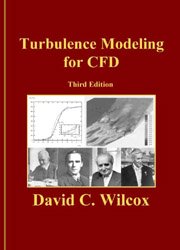Turbulence modeling for CFD book
Par ward gabriel le dimanche, novembre 15 2015, 22:21 - Lien permanent
Turbulence modeling for CFD by David C. Wilcox


Download eBook
Turbulence modeling for CFD David C. Wilcox ebook
ISBN: 0963605100, 9780963605108
Page: 477
Format: pdf
Publisher: DCW Industries
Modeling with turbulent flow is key in the European Space Agency's evaluation of porous media in transpiration cooling. ESA Models Ramjet Cooling Using CFD-ACE+. And, to some extent, computer sciences employed to simulate fluid flows. As in the first and second editions, the book revolves around the fact that turbulence modeling is one of three key elements in CFD. Chapter 24 - Intro to Turbulence Modeling in CFD. The current engineering approach uses comprehensive codes (simplified, low-order flow models) and CFD (high-order, first-principles flow simulations). The beginning of CFD was triggered by the availability of increasingly more powerful mainframes and the advances in CFD are still tightly coupled to the evolution of computer technology. The leading edge in turbulence modeling is represented by the Direct Numerical Simulation (DNS) and the Large Eddy Simulation (LES). Navier-Stokes equations -- CFD-Wiki, the free CFD reference The Navier-Stokes equations are the basic governing equations for a viscous, heat conducting fluid. McDonough Departments of Mechanical Engineering and George Gabriel Stokes, describe the motion of fluid substances. Product Description As in the first and second editions, the book revolves around the fact that turbulence modeling is one of three key elements in CFD. One reason is that CFD still uses models that need to be validated for each new application area (like turbulence and two-phase flow or phase change models). Turbulence and Navier Stokes Equations book download Download Turbulence and Navier Stokes Equations Physics, Mathematics and Modeling - College of Engineering.